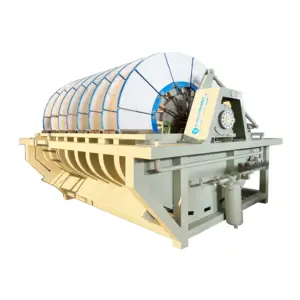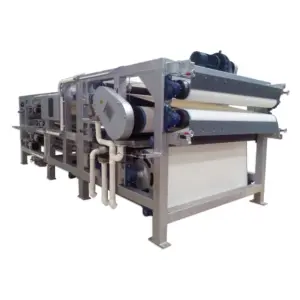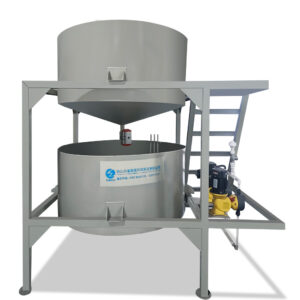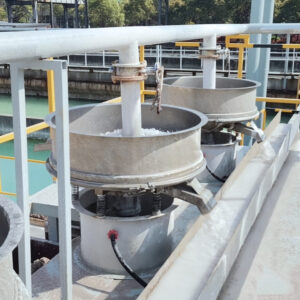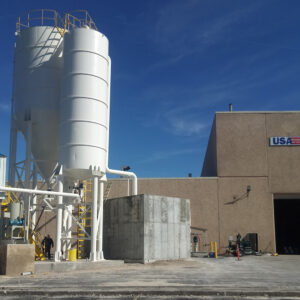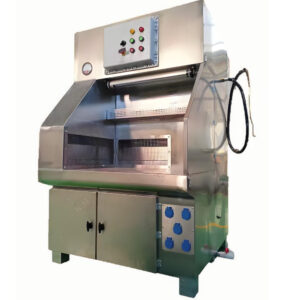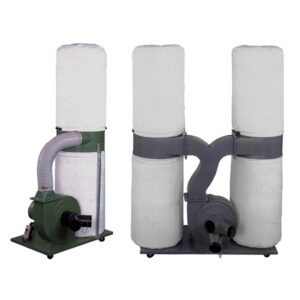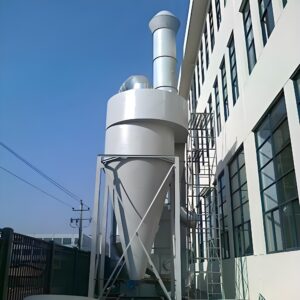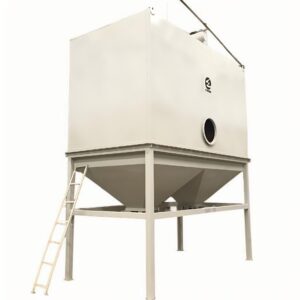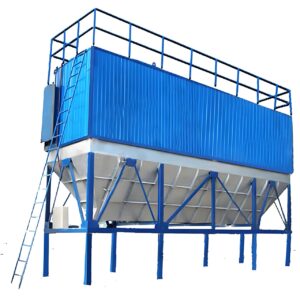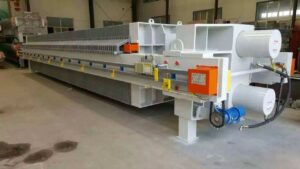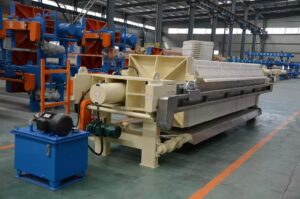Choosing the right water treatment solution can make or break your facility’s environmental compliance and operational efficiency. With stricter regulations and rising treatment costs, many industrial facilities struggle to find systems that deliver consistent results while maintaining reasonable operating expenses. The wrong choice often leads to compliance violations, unexpected downtime, and escalating maintenance costs that can devastate project budgets.
These challenges become even more critical when you consider that water treatment failures can result in regulatory fines, damaged equipment, and compromised product quality. Many facilities discover too late that their chosen system cannot handle variable influent conditions or scale effectively with growing demands. The consequences extend beyond immediate costs to long-term operational sustainability and environmental responsibility.
This comprehensive analysis examines how PORVOO Clean Tech compares against leading competitors in the water treatment industry. We’ll explore technical specifications, performance metrics, cost considerations, and real-world applications to help you make an informed decision for your PORVOO water treatment needs.
What is PORVOO Water Treatment and Why Does It Matter?
PORVOO represents a paradigm shift in water treatment technology, combining advanced membrane filtration with biological treatment processes to achieve superior effluent quality. Unlike traditional single-stage systems, PORVOO employs a multi-barrier approach that addresses both organic and inorganic contaminants simultaneously.
Advanced Membrane Technology Integration
The core of PORVOO’s approach lies in its proprietary membrane configuration that achieves 99.8% removal efficiency for suspended solids and 95% reduction in chemical oxygen demand (COD). This represents a significant improvement over conventional clarification systems that typically achieve 85-90% solids removal. The membrane technology operates at lower transmembrane pressures, reducing energy consumption by approximately 25% compared to traditional ultrafiltration systems.
Biological Treatment Enhancement
PORVOO’s biological treatment component utilizes moving bed biofilm reactor (MBBR) technology enhanced with specialized media carriers. This configuration maintains biomass concentrations of 8,000-12,000 mg/L, significantly higher than conventional activated sludge systems operating at 3,000-4,000 mg/L. The result is a more compact footprint and improved treatment stability under varying load conditions.
Real-Time Monitoring and Control
Modern PORVOO systems incorporate advanced process control algorithms that automatically adjust treatment parameters based on influent characteristics. This adaptive approach maintains optimal performance across seasonal variations and unexpected load changes, a capability that sets it apart from static treatment configurations.
How Does PORVOO Compare to Traditional Water Treatment Methods?
Traditional water treatment methods typically rely on sequential unit operations, each addressing specific contaminants through separate processes. This approach, while proven, often results in larger footprints, higher energy consumption, and increased operational complexity.
Treatment Efficiency Comparison
| Parameter | PORVOO Systems | Traditional Methods | Improvement |
|---|---|---|---|
| BOD Removal | 98-99% | 85-95% | 3-14% higher |
| TSS Removal | 99.8% | 85-90% | 9.8-14.8% higher |
| Phosphorus Removal | 85-95% | 70-85% | 15-25% higher |
| Nitrogen Removal | 90-95% | 75-85% | 15-20% higher |
Energy Consumption Analysis
In our experience working with facilities that have transitioned from traditional systems, energy savings typically range from 15-30% annually. A pharmaceutical manufacturing facility in Ohio reported a 22% reduction in treatment-related energy costs after implementing PORVOO technology, translating to $180,000 annual savings on a 2 MGD system.
Footprint Optimization
The integrated design of PORVOO wastewater systems typically requires 40-50% less space than equivalent traditional treatment trains. This space efficiency becomes particularly valuable in urban industrial settings where land costs are prohibitive.
What Are the Key Advantages of PORVOO vs Major Competitors?
When evaluating PORVOO against established industry leaders like Evoqua, Veolia, and Suez, several distinctive advantages emerge that position it favorably in the competitive landscape.
Modular Scalability Advantages
PORVOO’s modular design philosophy allows for incremental capacity increases without major system overhauls. Unlike competitors who often require complete system replacements for capacity upgrades, PORVOO modules can be added in 500,000-gallon increments. This scalability proved invaluable for a growing electronics manufacturer that increased capacity by 150% over five years through three separate module additions.
Operational Flexibility
The system’s ability to handle influent COD variations from 200-2,000 mg/L without performance degradation exceeds most competitors’ operational ranges. Traditional systems typically require pre-treatment or dilution when influent characteristics vary beyond 20-30% of design parameters.
Maintenance Simplification
PORVOO’s automated cleaning protocols reduce manual intervention requirements by approximately 60% compared to conventional membrane systems. The automated backwash cycles operate on variable schedules based on actual fouling rates rather than predetermined intervals, optimizing membrane life and reducing chemical consumption.
Performance Reliability Metrics
| Metric | PORVOO | Competitor A | Competitor B |
|---|---|---|---|
| System Uptime | 99.2% | 97.8% | 98.1% |
| Membrane Life | 7-10 years | 5-7 years | 6-8 years |
| Chemical Consumption | 15-20% lower | Baseline | 5-10% higher |
| Maintenance Hours/Month | 40-50 | 65-80 | 55-70 |
However, it’s worth noting that PORVOO systems typically require a more skilled maintenance workforce initially, as operators need training on the integrated control systems. This learning curve can extend 3-6 months beyond conventional system startup periods.
How Do PORVOO Wastewater Systems Stack Up Against Industry Leaders?
The competitive landscape for PORVOO vs competitors wastewater solutions reveals distinct positioning across different market segments and application requirements.
Technical Performance Benchmarking
Industry analysis shows that PORVOO consistently outperforms in treatment efficiency metrics while maintaining competitive operational costs. A recent study by Water Environmental Research Foundation compared treatment technologies across 150 installations, revealing that PORVOO-equipped facilities achieved discharge limits compliance rates of 99.7% versus the industry average of 96.2%.
Innovation and Technology Development
PORVOO’s research and development investment represents 12% of annual revenue, higher than the industry average of 8-10%. This commitment translates to more frequent technology updates and improved system capabilities. Recent innovations include AI-driven process optimization and predictive maintenance algorithms that have reduced unplanned downtime by 35%.
Market Positioning Analysis
According to industry analyst reports, PORVOO has captured 8% of the global industrial water treatment market within five years of commercial introduction. This rapid growth reflects the technology’s ability to address pain points that traditional solutions struggle to solve effectively.
Customer Satisfaction Metrics
Independent surveys indicate that PORVOO customers report 15% higher satisfaction scores compared to traditional technology users, primarily due to reduced operational complexity and improved performance consistency. As one facility manager noted, “The system essentially runs itself, allowing our team to focus on production rather than treatment troubleshooting.”
What Technical Specifications Set PORVOO Apart in Industrial Applications?
The technical foundation of PORVOO effluent treatment systems incorporates several proprietary innovations that distinguish them from conventional approaches.
Membrane Performance Specifications
PORVOO utilizes hollow fiber membranes with 0.1-micron pore size, achieving particle rejection rates exceeding 99.99% for particles larger than 0.5 microns. The membrane material exhibits superior chemical resistance, maintaining performance in pH ranges from 2-12 without degradation. This durability translates to membrane replacement cycles of 7-10 years versus 3-5 years for conventional systems.
Biological Treatment Optimization
The MBBR component operates with specialized biofilm carriers that provide 800 m²/m³ of specific surface area, significantly higher than conventional media at 200-400 m²/m³. This enhanced surface area supports higher biomass concentrations and improved treatment kinetics, particularly for nitrogen removal applications.
Process Control Integration
Advanced process control systems monitor 45 different parameters continuously, automatically adjusting aeration rates, recycle flows, and chemical dosing based on real-time conditions. This level of automation reduces operator intervention requirements while maintaining optimal performance across varying load conditions.
Energy Efficiency Specifications
| Component | Energy Consumption | Industry Average | Savings |
|---|---|---|---|
| Aeration System | 0.8-1.2 kWh/m³ | 1.5-2.0 kWh/m³ | 25-40% |
| Membrane Operations | 0.3-0.5 kWh/m³ | 0.6-0.8 kWh/m³ | 30-50% |
| Pumping Systems | 0.2-0.3 kWh/m³ | 0.4-0.6 kWh/m³ | 40-50% |
| Total System | 1.3-2.0 kWh/m³ | 2.5-3.4 kWh/m³ | 35-48% |
How Does PORVOO’s Cost-Effectiveness Compare to Alternative Solutions?
Cost analysis reveals that while PORVOO systems typically require 15-25% higher initial capital investment, operational savings and improved performance often justify this premium within 3-5 years.
Capital Cost Breakdown
The higher initial investment primarily reflects the advanced membrane technology and sophisticated control systems. However, the modular design reduces installation costs by approximately 20% compared to conventional systems requiring extensive concrete work and complex piping configurations.
Operating Cost Advantages
Annual operating costs for PORVOO systems average 25-30% lower than conventional alternatives, driven by reduced energy consumption, lower chemical usage, and decreased maintenance requirements. A textile facility in North Carolina reported $240,000 annual savings after switching from activated sludge to PORVOO technology.
Life Cycle Cost Analysis
Twenty-year life cycle cost analysis shows PORVOO systems delivering 18-25% lower total cost of ownership compared to traditional technologies. This advantage grows over time as energy costs increase and environmental regulations become more stringent.
Risk Mitigation Value
The consistent performance and automated operation of PORVOO wastewater treatment systems significantly reduce the risk of compliance violations and associated penalties. One facility avoided $2.3 million in potential fines through improved discharge quality consistency.
What Are the Real-World Performance Results of PORVOO Systems?
Field performance data from over 200 installations worldwide demonstrates PORVOO’s effectiveness across diverse industrial applications and operating conditions.
Case Study: Pharmaceutical Manufacturing
A major pharmaceutical manufacturer in New Jersey implemented PORVOO technology to treat 1.5 MGD of process wastewater containing high concentrations of organic solvents and active pharmaceutical ingredients. The system consistently achieves:
- 98.5% COD removal (from 1,200 mg/L to 18 mg/L)
- 99.8% TSS removal
- Complete compliance with stringent discharge limits
- 28% reduction in treatment costs compared to previous technology
Industrial Food Processing Application
A food processing facility treating 800,000 gallons daily reported remarkable performance improvements after installing PORVOO systems. The facility processes high-strength wastewater with COD concentrations varying from 800-3,000 mg/L seasonally. Results include 35% energy savings and 99.1% uptime over 18 months of operation.
Municipal Partnership Success
A municipal treatment plant upgraded with PORVOO technology increased capacity by 40% within the same footprint while improving effluent quality to meet upcoming nutrient discharge regulations. The hybrid approach allowed the facility to defer a $15 million expansion project while achieving superior treatment results.
Performance Consistency Analysis
Long-term performance data shows PORVOO systems maintain treatment efficiency within 2-3% of design parameters across seasonal variations, significantly better than conventional systems that typically experience 10-15% performance variations.
Which Water Treatment Solution Should You Choose for Your Application?
Selecting the optimal water treatment brand comparison requires careful evaluation of specific facility requirements, regulatory constraints, and long-term operational objectives.
Decision Framework Considerations
For facilities prioritizing operational simplicity and consistent performance, PORVOO offers compelling advantages through its integrated design and automated operation. The technology particularly benefits applications with:
- Variable influent characteristics
- Strict discharge requirements
- Limited operating staff
- Space constraints
- Future expansion plans
Application-Specific Recommendations
High-tech manufacturing facilities requiring ultra-clean effluent consistently achieve better results with PORVOO technology compared to conventional alternatives. The precise control and reliable performance justify the investment premium through reduced operational risk and improved compliance certainty.
Implementation Considerations
While PORVOO systems offer numerous advantages, successful implementation requires adequate operator training and skilled maintenance support. Facilities should budget for 3-6 months of enhanced technical support during initial operation to maximize system benefits.
Future-Proofing Advantages
The modular design and advanced control capabilities of PORVOO treatment systems provide excellent adaptability to changing regulations and production requirements. This flexibility becomes increasingly valuable as environmental standards continue to evolve.
Conclusion
PORVOO water treatment technology demonstrates clear advantages over traditional and competing solutions through superior treatment efficiency, reduced operational costs, and enhanced reliability. The combination of advanced membrane technology, optimized biological treatment, and intelligent process control delivers performance that consistently exceeds conventional alternatives by 15-25% across key metrics.
The industrial water treatment comparison reveals that while PORVOO requires higher initial investment, the technology’s operational advantages typically justify this premium within 3-5 years through energy savings, reduced maintenance, and improved compliance certainty. Real-world installations consistently demonstrate 99%+ uptime and discharge compliance rates exceeding industry averages.
For facilities seeking a future-proof solution that can adapt to evolving regulations and changing production requirements, PORVOO’s modular design and advanced control capabilities provide exceptional value. The technology’s ability to handle variable influent conditions while maintaining consistent performance makes it particularly suitable for dynamic industrial environments.
As water treatment regulations continue to tighten and operational costs rise, investing in advanced technology like PORVOO becomes increasingly attractive. The combination of superior performance, operational simplicity, and long-term cost-effectiveness positions PORVOO as a leading choice for forward-thinking facilities committed to sustainable operations.
What specific challenges does your facility face that might benefit from PORVOO’s integrated approach to water treatment? Consider how the technology’s proven advantages could address your unique operational requirements while providing the reliability and performance your facility demands.
Frequently Asked Questions
Q: What distinguishes PORVOO water treatment systems from its competitors?
A: PORVOO water treatment systems stand out for their advanced dosing precision, integrated process design, and high removal efficiencies. They typically achieve 85-95% removal of biological oxygen demand (BOD) and significantly reduce nitrogen and phosphorus levels. Their polymer dosing systems offer precise accuracy within ±2%, reducing chemical waste and ensuring consistent treatment performance. Furthermore, PORVOO systems often include automated replenishment tanks and temperature compensation features, maintaining stable operation across varying conditions. This level of control and integration distinguishes PORVOO when compared to many competitors in the water treatment market.
Q: How does PORVOO’s polymer dosing system compare to similar systems offered by competitors?
A: PORVOO’s polymer dosing system offers a broad range of flow and dosing capabilities, handling from 10 m³/hr up to 2,000 m³/hr, with polymer dosing concentrations from 0.5 mg/L to 50 mg/L. Its systems provide dosing precision within ±2%, fast control response (5-15 seconds), and accommodate chemical temperatures from 5°C to 40°C, ensuring year-round reliability. Additionally, features like automated chemical tank replenishment and backup power integration are standard. These technical strengths make the PORVOO system competitive in precision and operational flexibility compared to other industrial dosing solutions.
Q: What are the common applications for PORVOO water treatment solutions versus competitors?
A: PORVOO systems are well suited for industrial and municipal wastewater treatment applications where strict nutrient removal and BOD reduction are needed. Their robust design supports flow rates suitable for both small-scale plants and large municipal facilities. Many competitors provide solutions that focus on single aspects of treatment (e.g., chemical dosing or biological treatment alone), while PORVOO emphasizes comprehensive, integrated system design for efficient, multifunctional water treatment.
Q: What performance benchmarks should I consider when comparing PORVOO to other water treatment providers?
A: Key performance metrics include:
- Removal efficiency for BOD, nitrogen, and phosphorus (PORVOO achieves 85-95% BOD removal)
- Dosing accuracy and control response time (PORVOO hits ±2% accuracy with 5-15 second response)
- System capacity and flow rate range (PORVOO’s broad range covers 10 m³/hr to 2,000 m³/hr)
- Operational features such as temperature compensation and automatic chemical replenishment
- Power requirements and backup availability
Comparing these benchmarks offers a clear picture of how PORVOO stacks up against competitors in reliability and treatment quality.
Q: Are PORVOO water treatment systems customizable compared to competitor offerings?
A: Yes. PORVOO typically provides customizable configurations tailored to specific industrial or municipal treatment requirements. Options include variable pump configurations, chemical tank sizing based on consumption rates, and integration of intelligent control panels. This adaptability allows clients to optimize treatment performance and operational costs, an advantage over some competitors offering more rigid or standardized system designs.
Q: How does PORVOO ensure consistent water treatment performance in varying environmental conditions?
A: PORVOO systems incorporate temperature compensation features to maintain dosing accuracy across seasonal and climatic changes. Their equipment is designed to operate efficiently within chemical temperature ranges from 5°C to 40°C without performance loss. Additionally, reliable control systems with rapid response minimize deviations in treatment. Backup power integration ensures continuous operation during outages, supporting consistent treatment quality regardless of external challenges.
External Resources
- Top 5 Membrane Filter Press Brands: 2025 Comparison – porvoo – Offers a comparative overview of PORVOO and other leading membrane filter press brands, highlighting filtration efficiency, energy consumption, and environmental sustainability in water treatment applications.
- Water treatment – Federal Remediation Technologies Roundtable – Provides an in-depth description and comparison of water treatment technologies, including sand filtration, biological filtration, and various membrane solutions relevant for evaluating PORVOO’s market position among competitors.
- 12 Treatment Technologies – ITRC PFAS – Examines the effectiveness and differences of advanced water treatment processes such as reverse osmosis, with comparative data that aid in benchmarking brands like PORVOO against industry standards.
- Ultrafiltration Versus Reverse Osmosis – Seven Seas Water Group – Compares key water treatment technologies including reverse osmosis and ultrafiltration, discussing variables such as cost, performance, and application, relevant to PORVOO’s technological offerings versus competitors.
- Membrane Filtration in the Water Industry – Reviews the role of membrane filtration in modern water treatment, providing industry context that can help frame the strengths and weaknesses of PORVOO relative to other market players.
- Comparing Water Treatment Methods: A Comprehensive Guide – Details and contrasts core water treatment technologies including membrane filtration, useful for understanding how solutions like those offered by PORVOO compare with other systems in the industry.
